Most gardening sites and books will mention companion planting — at least in passing. However, the conversation typically revolves around companion plants for vegetables. It is more difficult to find information on how to do companion planting with flowers like lavender. We’re here to help ensure you have all the information you need to establish a successful garden. So, we gathered details on twenty-five of the best lavender companion plants. Put a few of these together in or near your lavender field, and see what happens!
1. Alliums
These onion relatives naturally repel deer and rabbits. That is good news for your lavender plants, which are vulnerable to these animals. Their tall flower spikes also offer a fantastic visual complement to lavender. And since alliums also prefer sandy soil and full sun, these two plants go perfectly together.

Alliums naturally repel deer and rabbits.
©Zigmunds Dizgalvis/Shutterstock.com
2. Apples
While you probably don’t want to eat lavender and apples together, they make a surprisingly nice garden pairing. The flowers attract pollinators, providing great benefits to the apple trees. On top of that, lavender naturally helps deter pests that plague apple orchards.

Lavender flowers attract pollinators, providing great benefits to the apple trees.
©Robophoto1/Shutterstock.com
3. Bee Balm
People love to look at bee balm flowers, and pollinators adore them, too. Planting these blossoms near your lavender will boost the overall appearance of your garden. And since both plants like similar growing conditions, they will thrive near each other.
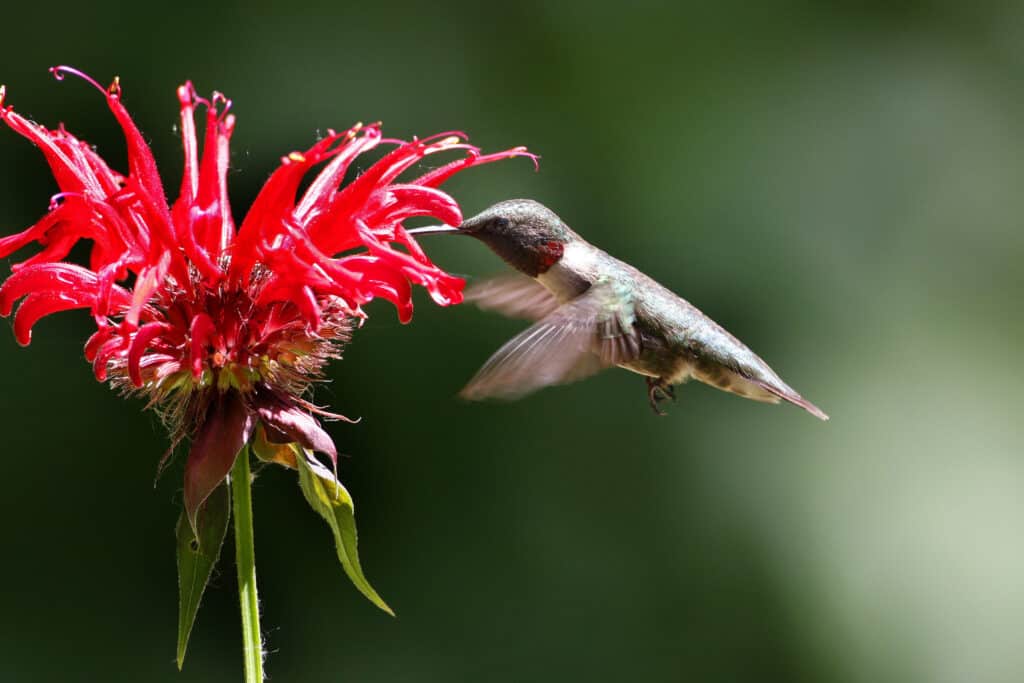
Bee balm draws in the birds and the pollinators.
©Chris Alcock/Shutterstock.com
4. Blueberries
Lavender helps deter predatory pests from chomping down on your prized blueberry bushes. Planting this lovely flower near blueberries will also help ensure a steady stream of pollinators.

Lavender attracts pollinators that will help boost your blueberry production even more!
©iStock.com/Nadya So
5. Brassicas
Okay, this is a plant family rather than a single plant. But it works. Members of the Brassica family go well near lavender. The flowers have a natural pest-repelling ability that helps protect your vulnerable brassicas. However, don’t forget that lavender needs less water than your brassica plants. So, be strategic about where you plant them.
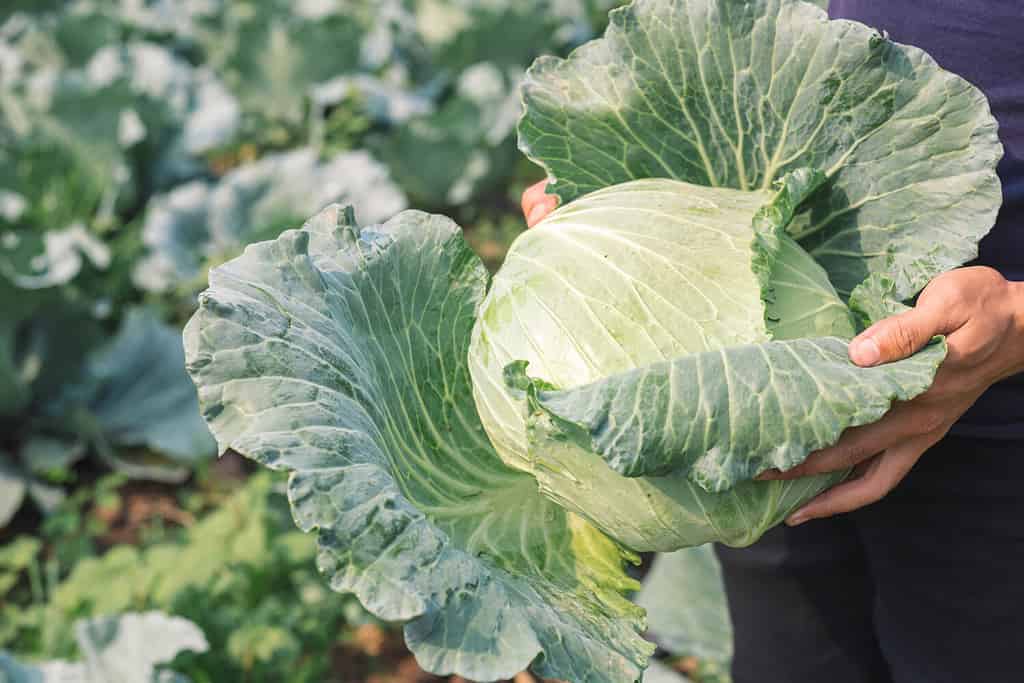
Lavender flowers have a natural pest-repelling ability that helps protect your vulnerable brassicas.
©Parkin Srihawong/Shutterstock.com
6. Catmint
Not all mint is compatible with lavender. In fact, catmint is the most drought-tolerant species in its family. So, while you want to avoid other mint family plants, feel free to add some catmint to your lavender field.
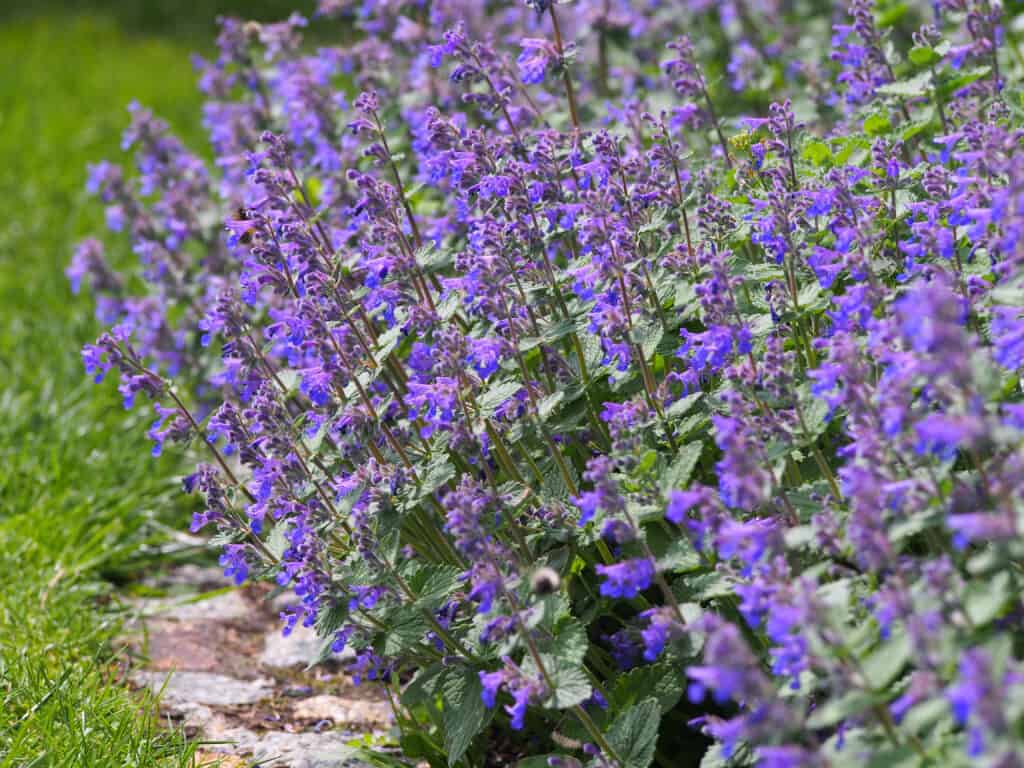
Catmint is a great companion for lavender since it is the most drought-tolerant species in the mint family.
©Anna Gratys/Shutterstock.com
7. Daylilies
The nice thing about daylilies is they will happily grow just about anywhere. So, you can save the better soil for picky perennials and plant your daylilies near lavender. Since these beautiful flowers don’t mind poor or dry growing conditions, they will work well next to lavender plants.
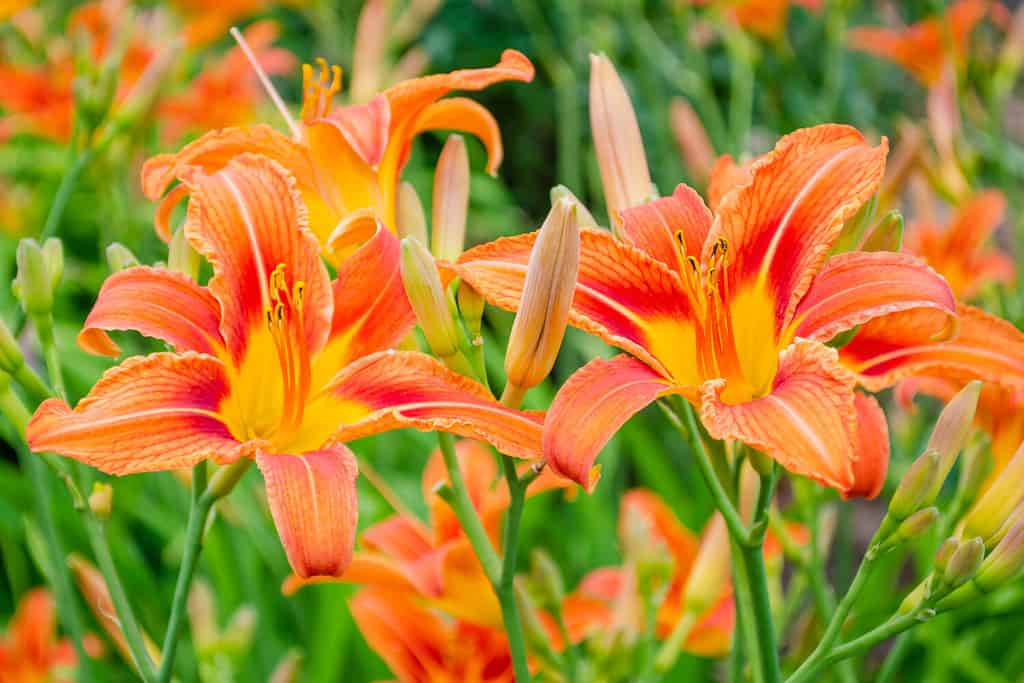
Daylilies will happily grow just about anywhere.
©Oksana Akhtanina/Shutterstock.com
8. Echinacea
Echinacea (coneflower) is popular on its own. However, planting it near lavender brings a new level of intrigue to your garden or yard. Both plants love full sun and are drought-tolerant, so they can get planted close together without harm.
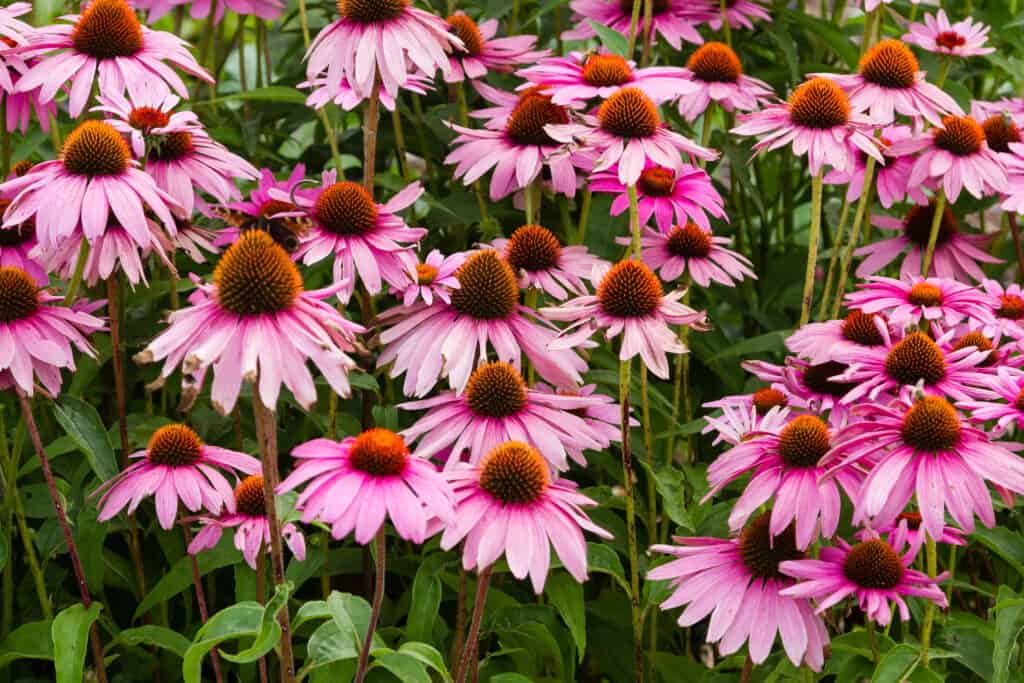
Coneflowers are rather drought-tolerant and don’t mind plenty of sun.
©Milosz Maslanka/Shutterstock.com
9. Geranium
These lovely flowers have similar growing requirements to lavender. So, you can plant the two near each other without negative consequences. They also attract lots of pollinators, which is beneficial for your lavender.
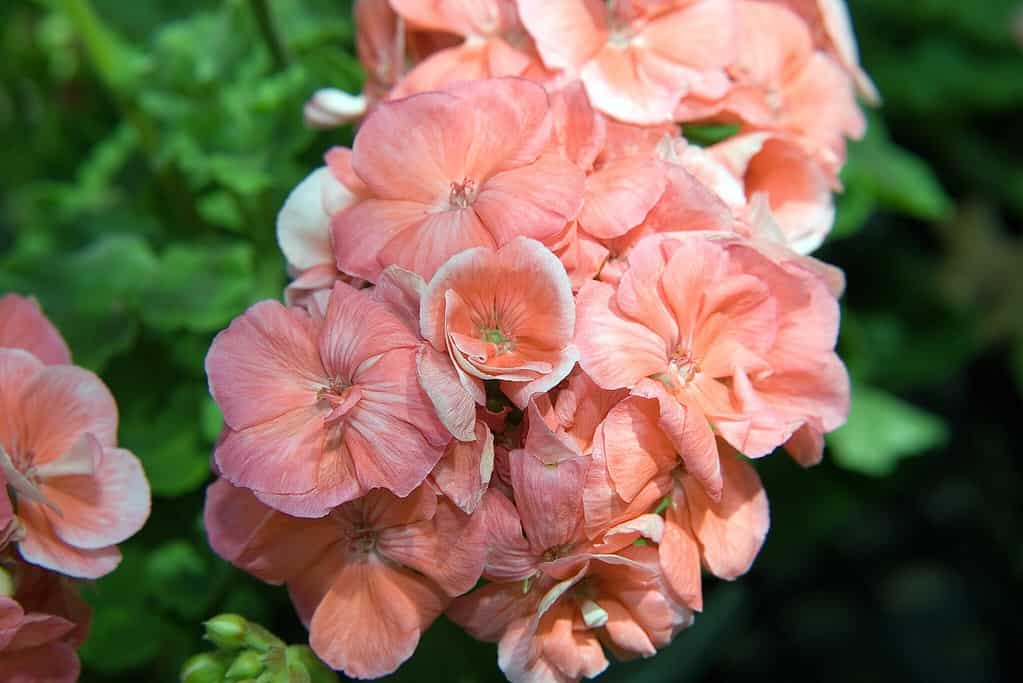
Geraniums have similar growing requirements to lavender.
©Photo by David J. Stang, CC BY-SA 4.0 , via Wikimedia Commons – Original / License
10. Marigold
Marigolds are one of the best companion plants you can add to almost anything, including lavender. They are natural pest repellents and also attract beneficial pollinators and insects. The latter adds an additional layer of protection against unwanted pests.
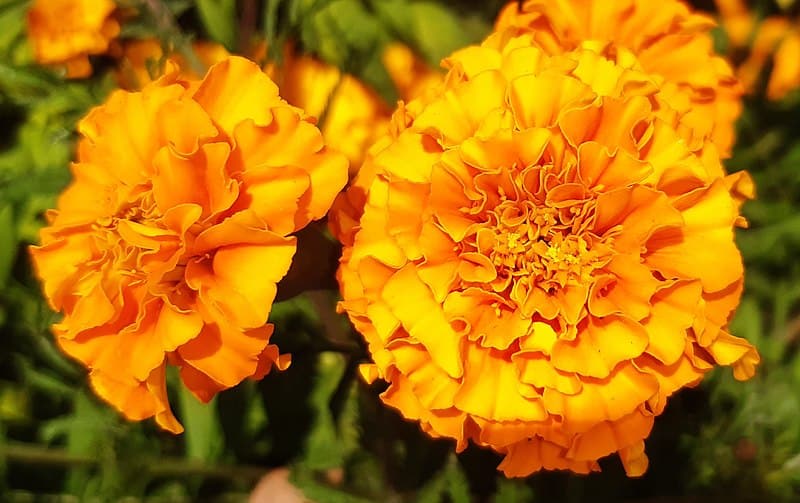
Marigolds are some of the best companion plants there are!
11. Onions
No pest likes to come near onions, which makes it one of the best companion plants for lavender. This plant will help deter all unwanted visitors from eating your lavender plants.
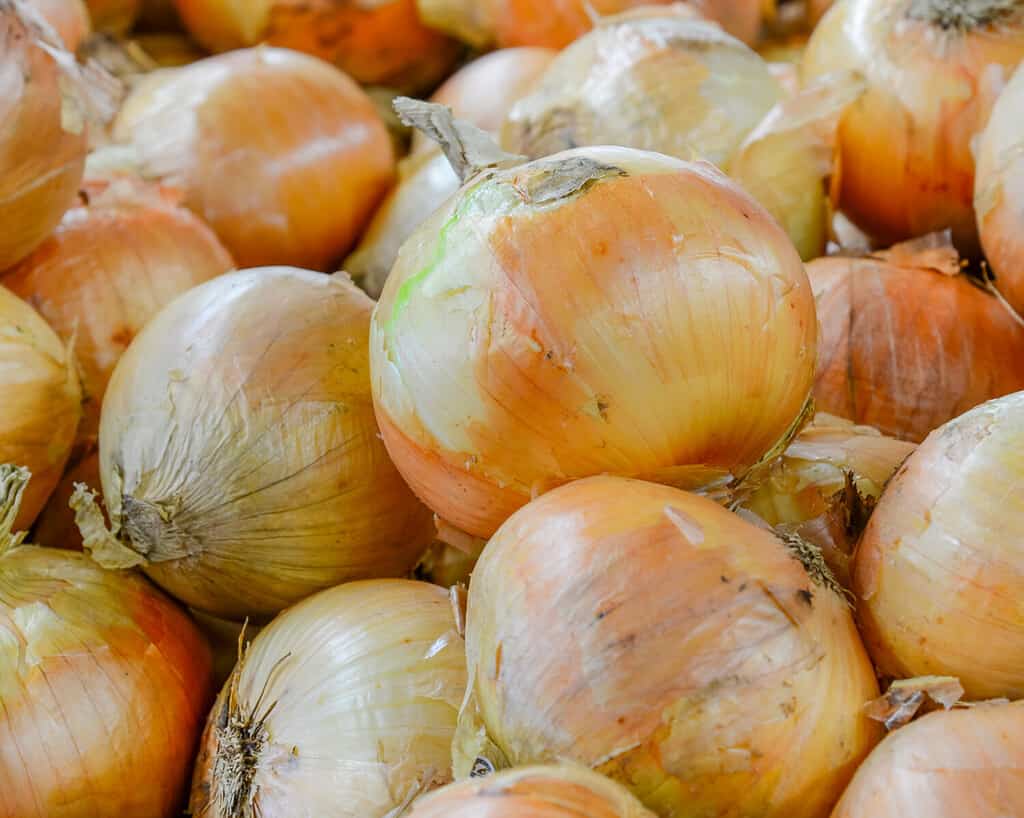
No pest likes to come near onions, which makes it one of the best companion plants for lavender.
©Trong Nguyen/Shutterstock.com
12. Oregano
Since oregano grows relatively low to the ground, it doesn’t compete too much with lavender for sun or nutrients. This herb also tolerates much of the same growing conditions as lavender.
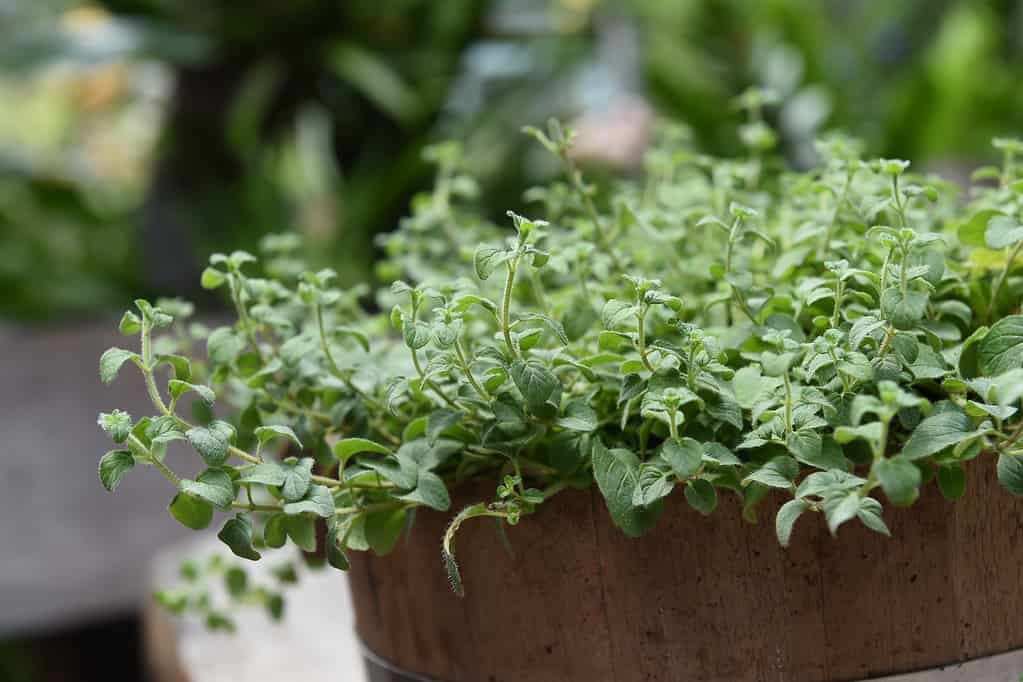
Oregano grows well with lavender since they prefer similar environments.
©nimon_t/iStock / Getty Images Plus via Getty Images
13. Parsley
This flavorful herb has natural pest-repellent properties. So, while lavender often does the heavy lifting with pests, parsley can help alleviate some of that work. Additionally, parsley attracts many beneficial insects. That is good for your lavender plants and garden as a whole.

Parsley will protect lavender from pest problems.
©Iurii Garmash/iStock / Getty Images Plus via Getty Images
14. Peaches
Putting lavender and peaches together may not have been top on your list. However, they go very well together. Peaches often get plagued by pests, which lavender can help repel. Additionally, the flowers attract loads of pollinators that will visit your peach tree and help produce an abundant harvest!
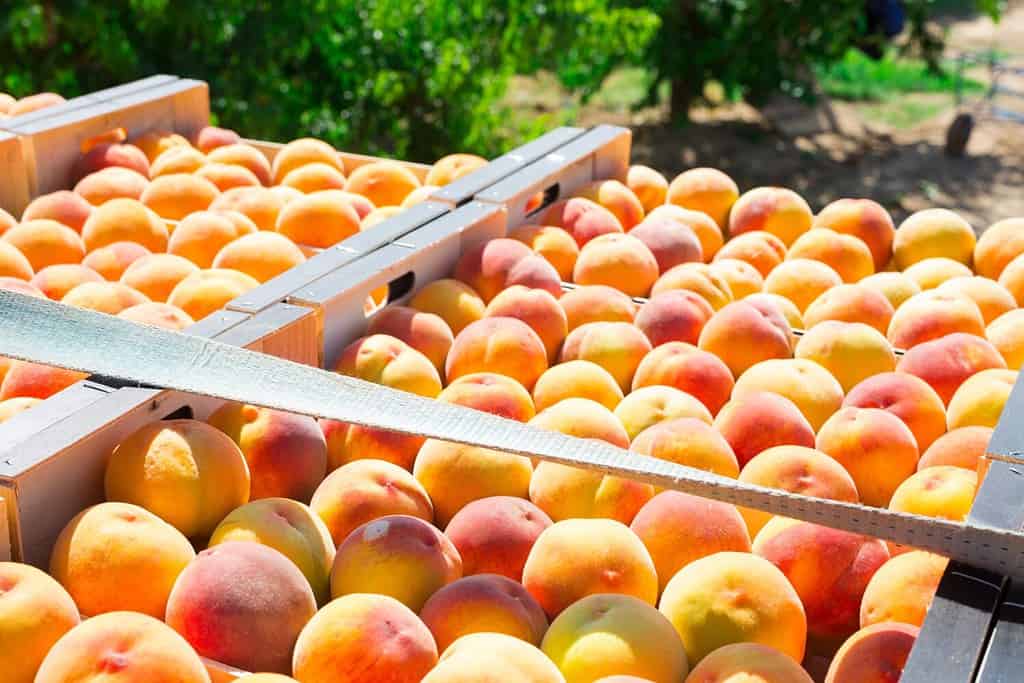
Peaches often get plagued by pests, which lavender can help repel.
©BearFotos/Shutterstock.com
15. Roses
These stunning flowers share similar environmental preferences and make great lavender companion plants. So, you can plant the two together without harming either plant. However, roses need slightly more water than lavender. So, don’t plant them on top of each other. Additionally, roses will benefit from lavender’s natural pest-repelling abilities.
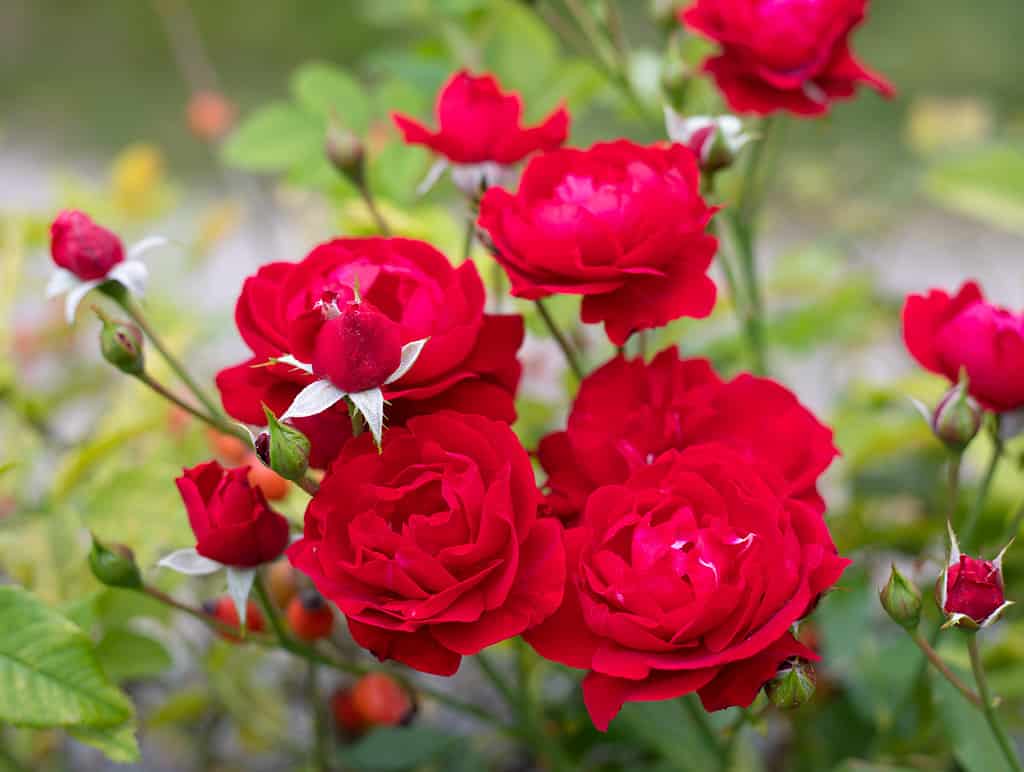
Roses share a preference for full sun. They also provide a stunning contrast to the purple blossoms.
©Maria Rzeszotarska/iStock via Getty Images
16. Rosemary
A classic garden pair is lavender and rosemary. These two Mediterranean staples prefer similar growing conditions. They both need hot, dry weather and tolerate sandy or poor soil. The only downside is that rosemary is not very cold-tolerant. So you may need another friend for your lavender during the winter.

A classic garden pair is lavender and rosemary.
©ARTFULLY PHOTOGRAPHER/Shutterstock.com
17. Sage
Sage enjoys full sun, little water, and sandy or poor soil, just like its Mediterranean cousins. Add some of this popular herb near your lavender to quickly and easily harvest what you need for culinary or medicinal applications.
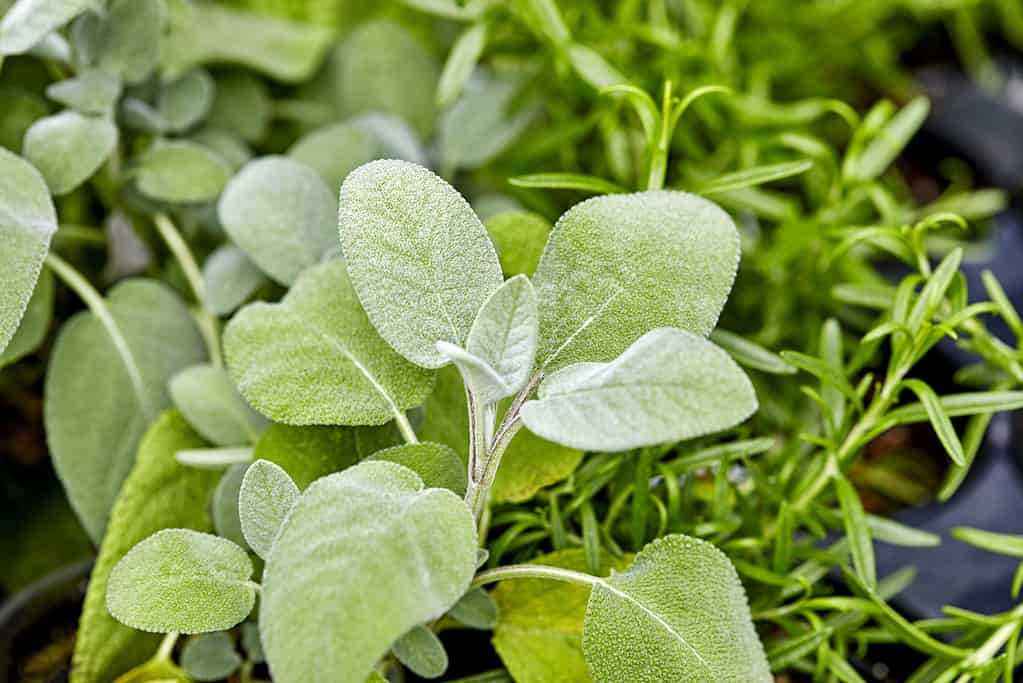
This delicious herb thrives in the same conditions as lavender.
©iStock.com/wingedwolf
18. Salvia
Planting salvia near your lavender will add a pop of color to any border or hedge. The two plants grow to a similar size and shape. Additionally, salvia prefers well-draining soil and plenty of direct sunlight. The combination of lavender and salvia increases the presence of pollinators, which will benefit your entire garden.
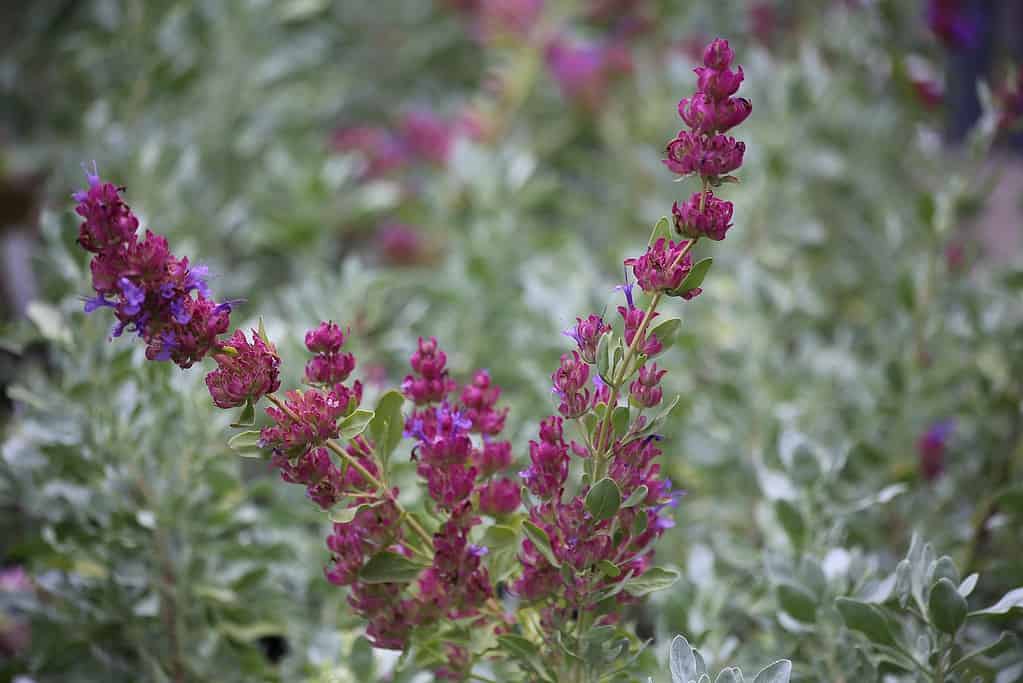
Planting salvia near your lavender will add a pop of color to any border or hedge.
©The Friends of Manito, Public domain, via Wikimedia Commons – Original / License
19. Sedum
This fascinating plant makes a lovely addition to lavender fields. Since it prefers some shade, you can plant it on the edges or between lavender plants. It prefers drier conditions, so it needs little water. Additionally, sedum can be planted in poor or sandy soil.
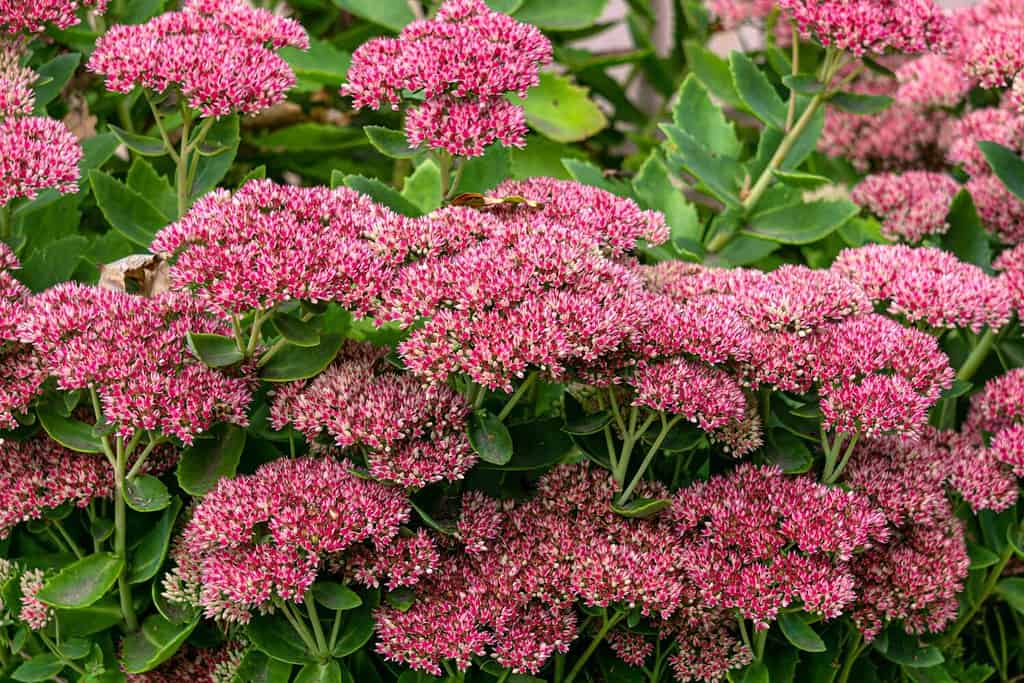
Sedum thrives in hot, dry climates, just like lavender.
©Obraz/Shutterstock.com
20. Squash
Planting squash near your lavender (or vice versa) is a fantastic idea. Lavender blossoms attract a wide range of pollinators, which is beneficial to your squash plants. Additionally, these flowers act as a natural pest deterrent, protecting the more vulnerable squash plants.
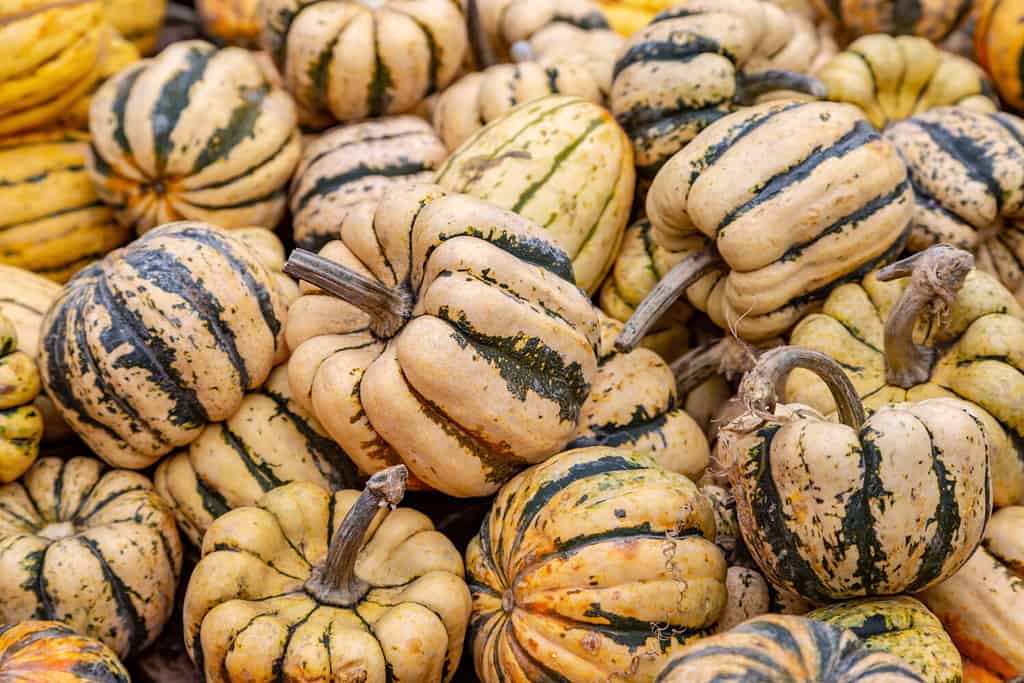
Lavender blossoms attract a wide range of pollinators, which is beneficial to your squash plants.
©Melanie Hobson/Shutterstock.com
21. Strawberries
Strawberries and lavender are a surprisingly good combination. The delicate fruit often gets preyed on by insects that lavender naturally repels. Additionally, lavender brings in ample pollinators to help boost fruit production.
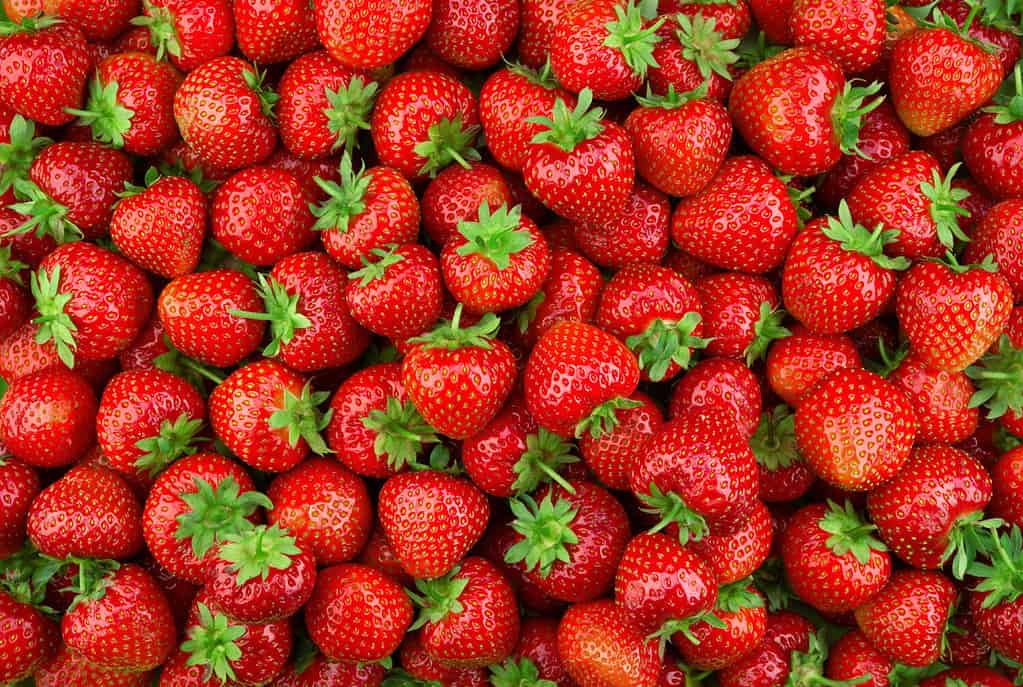
Lavender helps guard strawberries from pest issues and brings in much-needed pollinators.
©MarcoFood/Shutterstock.com
22. Sweet Basil
You’ll have to choose between the sage/oregano/thyme combination and sweet basil. While these all love lavender, they don’t play well with each other. Like the Mediterranean herbs, sweet basil enjoys a drier environment. It also helps protect lavender from pesky aphids.
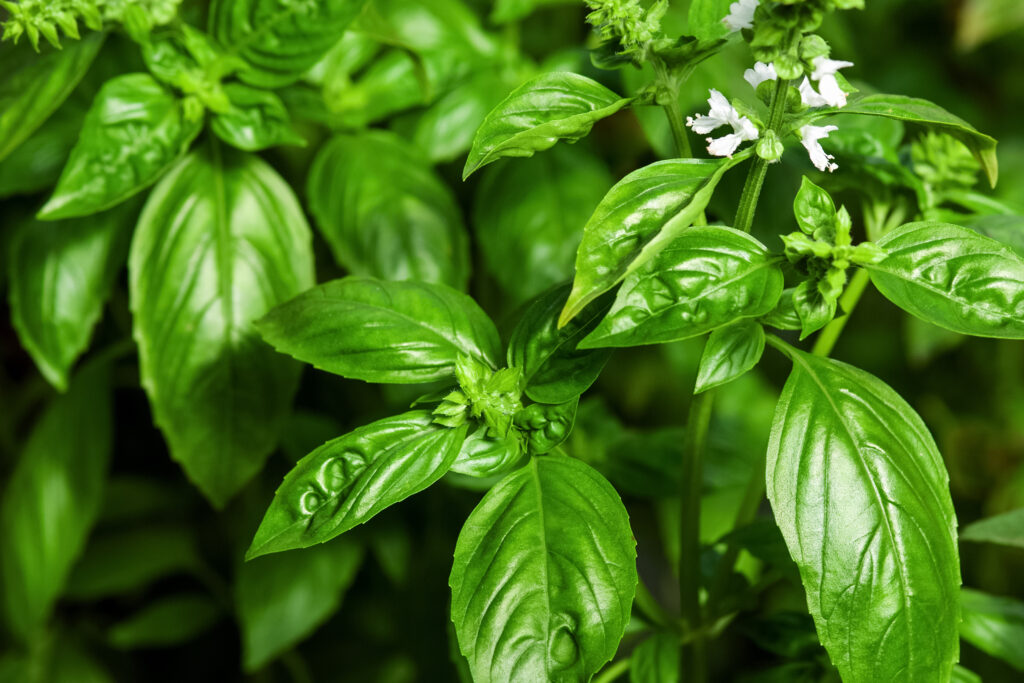
Sweet basil will help protect your lavender from pests like aphids.
©Nadya So/Shutterstock.com
23. Thyme
Another Mediterranean herb that pairs well with lavender is thyme. It likes dry soil, hot climates, and little water, just like lavender. However, it offers one additional bonus. Thyme is more cold-hardy than rosemary, so it will stick around into the winter longer.

Thyme works well near lavender since they both love full sun and dry soil.
©pilialoha/Shutterstock.com
24. Yarrow
This amazing flower grows so rapidly that it often gets compared to weeds. However, it is far from weedy. Yarrow is a prized plant in the traditional medicinal world. And the best part is that its growth can be controlled easily. All you need to do is plant it in slightly drier, poorer soil conditions, like what lavender loves!
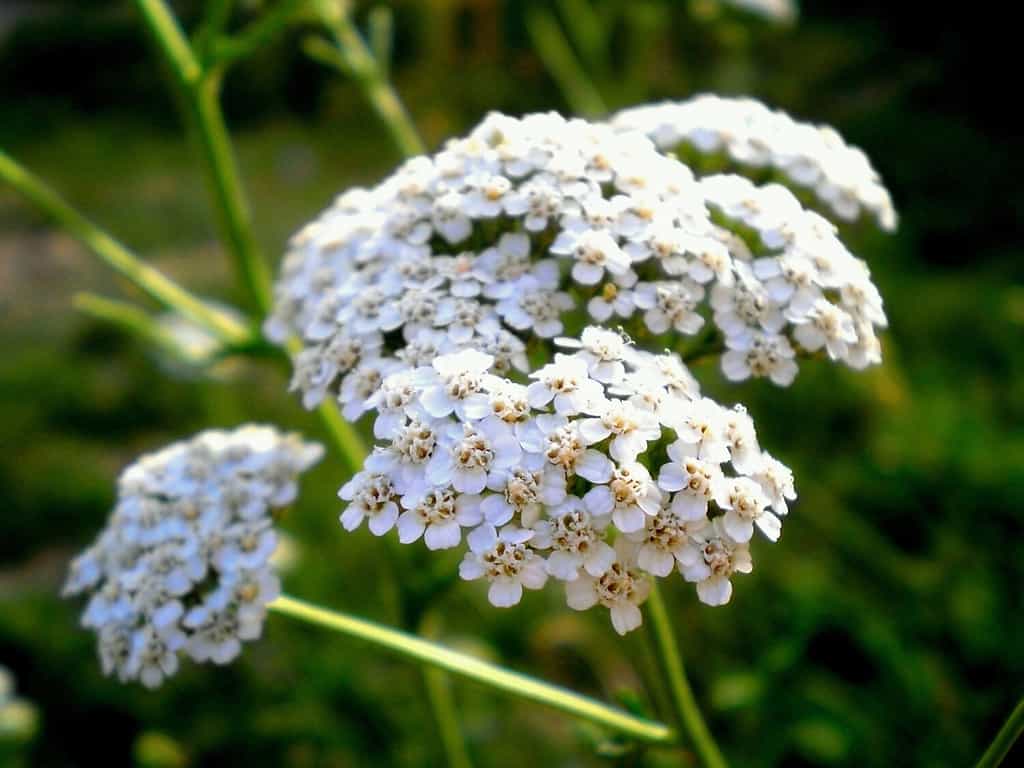
Yarrow is a prized plant in the traditional medicinal world.
©SakSa/Shutterstock.com
25. Zinnias
Another flower that compliments lavender plants is zinnias. These flowers look fantastic next to the lavender spikes and like the same growing conditions. Give them full sun and poorer, sandy soil, and they are very happy!

Zinnias like the same growing conditions as lavender. Give them full sun and poorer, sandy soil, and they are very happy!
©Sutta kokfai/Shutterstock.com
What Not to Grow Near Lavender?
Unfortunately, lavender doesn’t play nicely with every plant. There are some plants you should avoid planting near your lavender for best results. These include:
- Asparagus: Asparagus produces chemicals that impede the growth of nearby plants. Avoid planting lavender nearby.
- Corn: This garden staple requires a lot of nitrogen, which makes it a direct competitor for lavender. Plant the two separately to prevent them from fighting over this crucial nutrient.
- Fennel: This vegetable doesn’t like to grow near anything. It prefers to have plenty of space to itself and can harm the growth of anything around it.
- Potatoes: As delicious as this vegetable is, it is also prone to many diseases. Those can harm your lavender plants if they get too close.
Additionally, since lavender prefers a drier home, it is important to avoid planting moisture-loving plants too close. If you do, one of your plants will end up damaged or killed due to too much (or too little) water.
Summary of the 25 Best Lavender Companion Plants
| Number | Plants | Why? |
|---|---|---|
| 1 | Alliums | Alliums keep the deer and rabbits away from lavender. They also like sandy soil and little water. |
| 2 | Apples | Lavender helps protect apples from invasive pests. |
| 3 | Bee Balm | These two flowers grow in similar environments. Both prefer full sun and sandy soil. |
| 4 | Blueberry | Lavender repels many of the insects that prey on blueberry plants. And the fruit will benefit from the influx of pollinators. |
| 5 | Brassicas | Lavender helps deter pests from brassicas, protecting them. |
| 6 | Catmint | This mint variety is more drought-tolerant than its relatives. |
| 7 | Daylilies | The two plants share similar growing conditions, and roses benefit from the pest-repelling properties of lavender. |
| 8 | Echinacea | This popular medicinal flower enjoys drier soil and is drought-tolerant, just like lavender. |
| 9 | Geranium | These flowers have similar growing requirements as lavender. |
| 10 | Marigold | Marigolds are a natural pest repellent. They also attract beneficial insects that help keep pests at bay. |
| 11 | Onions | Onions help deter pests that like to munch on lavender plants. |
| 12 | Oregano | Oregano likes sunny, hot, dry conditions. |
| 13 | Parsley | Parsley protects lavender from pest infestation and helps attract beneficial insects. |
| 14 | Peaches | Lavender brings pollinators to the peach trees and repels pesky peach pests. |
| 15 | Rose | Lavender helps repel insects that prey on strawberries while also attracting much needed pollinators. |
| 16 | Rosemary | This Mediterranean herb likes similar growing conditions – poor soil and full sun. |
| 17 | Sage | Sage grows best in hot, dry climates and needs little water, much like lavender. |
| 18 | Salvia | Salvia enjoys full sun just like lavender. It also has similar water requirements. |
| 19 | Sedum | Sedum likes dry conditions and poor soil. |
| 20 | Squash | Lavender attracts pollinators to help improve the development of squash blossoms. It also deters pests. |
| 21 | Strawberries | Yarrow’s growth can only be contained when planted in similar soil conditions to those lavender enjoys. |
| 22 | Sweet Basil | This popular herb will help deter pests like aphids that like to plague lavender. |
| 23 | Thyme | This herb likes full sun, little water, and well-draining soil just like lavender. |
| 24 | Yarrow | Lavender helps repel insects that prey on strawberries while also attracting much-needed pollinators. |
| 25 | Zinnia | These flowers like similar growing conditions. They need full sun and thrive in poorer soil conditions. |
The photo featured at the top of this post is © ESstock/Shutterstock.com
Thank you for reading! Have some feedback for us? Contact the AZ Animals editorial team.







